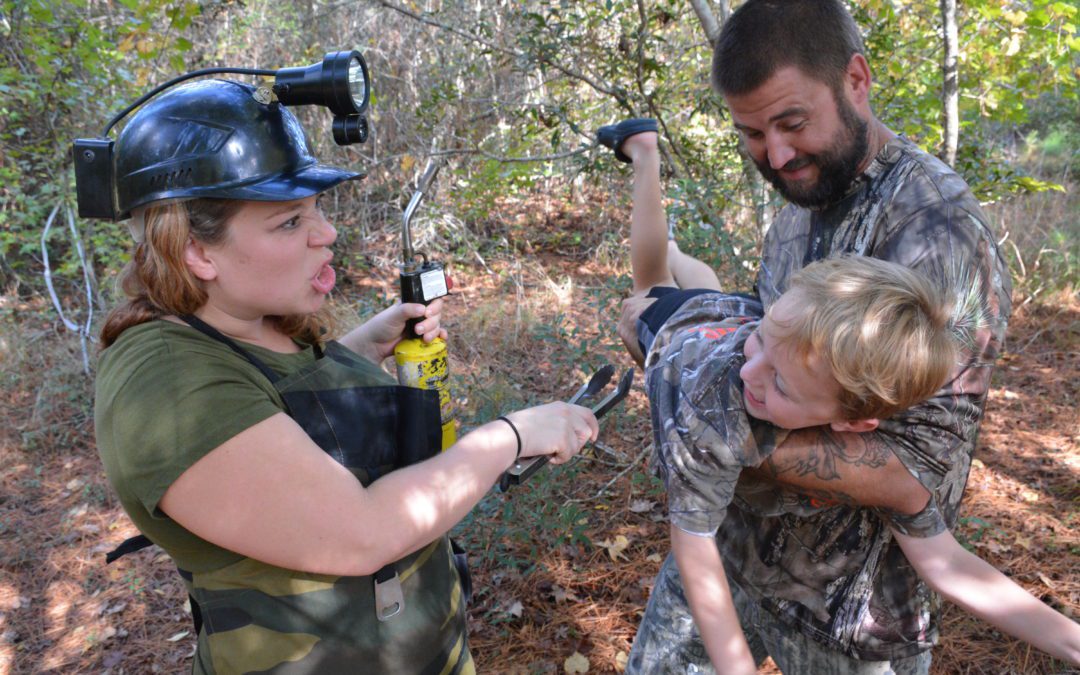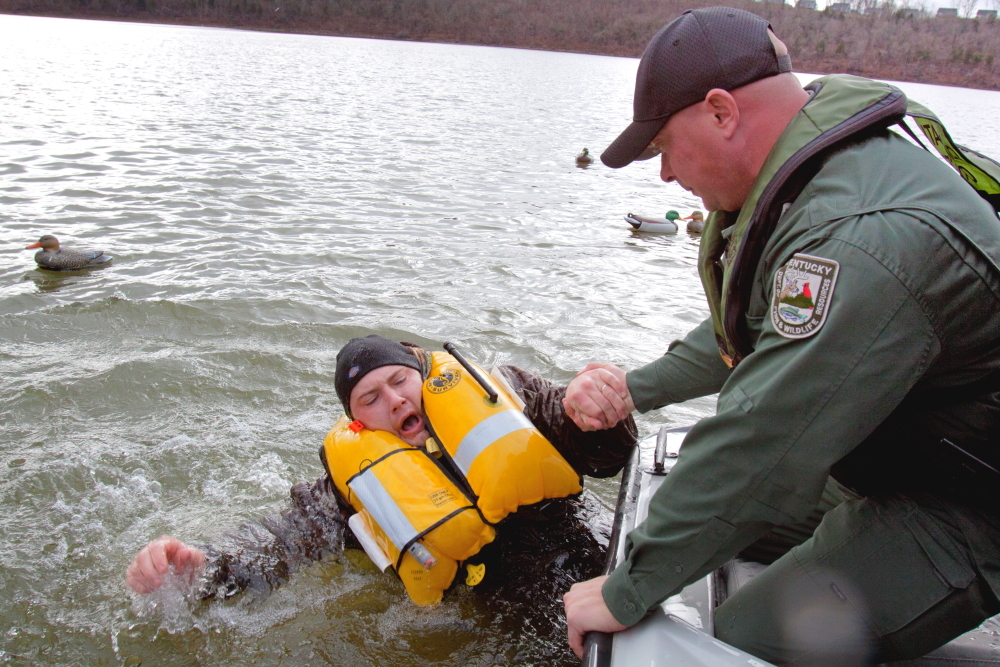When you venture outdoors with your family, you will likely encounter ticks and other potentially harmful parasites. Ticks and the like tend to climb up your legs to the most vulnerable and intimate of places, secret places only you and your spouse talk about on Valentine’s Day. To compound this little dilemma, the older some of us get, the chubbier and less flexible we become, and the more places an energetic, go-getter tick can find to burrow in, hide under or scurry around, often totally unbeknown and unseen until your annual doctor’s visit. Ticks are a lot like in-laws and some relatives: they may be fine for short visits, but extended stays could endanger your health.
Every family needs an official “tick checker,” someone who can line the family up, make them strip down, and search them carefully for ticks after every outdoor outing. You can rule out Granny, because her eyesight is weak and her modest heart can’t stand much nudity these days. And let’s face it; no one wants Old Dad inspecting their backside for ticks, because you know Dad will break out the coon-hunting head lamp and the BBQ grill tongs to aid in his search-and-destroy mission. Lord help you if he finds one, because then he’ll run to the shed and get his propane blow torch to burn that sucker off!

Every family needs a “tick checker.”
So sadly, the honor usually goes to Mom. Despite her protests – “I don’t want to do this! They’re your children, too, you know!” – Mommy must assume the role of official tick checker. Much to her joy, she is the one who must set aside her bashfulness and her appetite, grab a flashlight and check things out in those little cracks, crevices and crannies where only a tick, a Mommy or a good doctor dare to go. As each family member returns from fun-filled treks in the wilderness, Mom the Official Tick Checker must chase them down and round them all up, kids first, saving the worst — Dad — for last, and inspect a parade of hairy limbs and rosy derrières, some larger and hairier and rosier than others, just to ensure that no one brought home any souvenir arachnids and everyone stays healthy.
With a nod to the old beer commercial, “Oh, Mom, The Official Tick Checker, we salute you!”
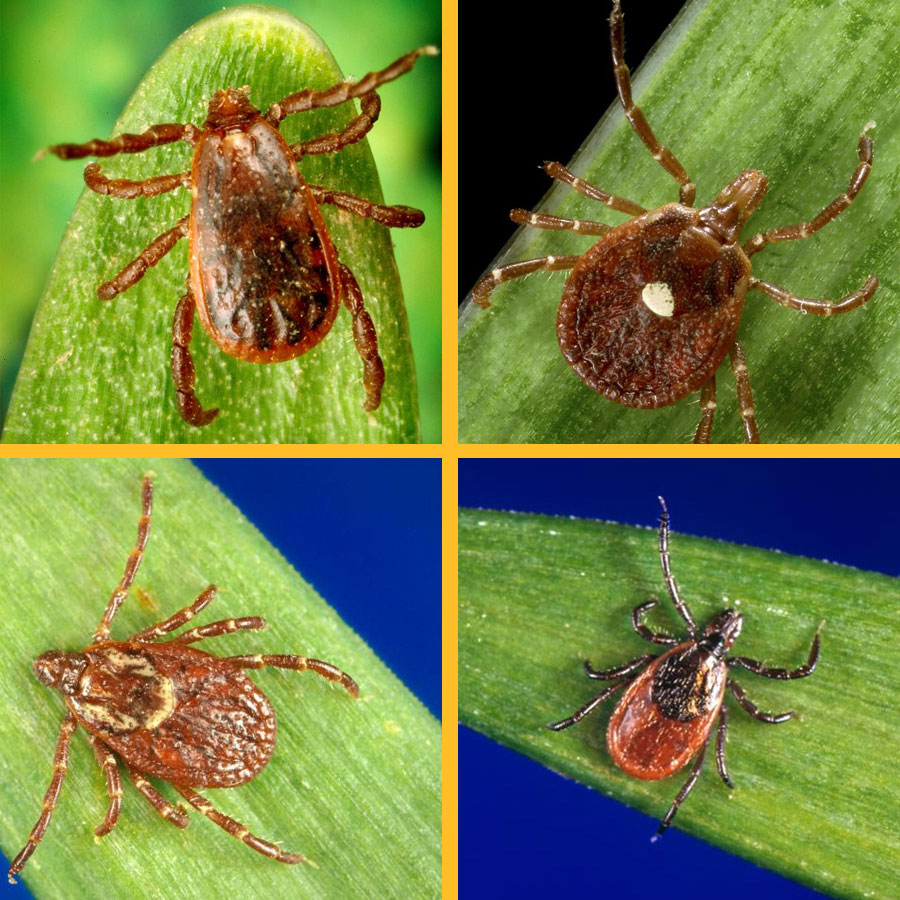
Pictured are ticks that commonly bite people in North America. Photo courtesy of the U.S. Centers for Disease Control and Prevention.
Early removal is key
All humor aside, from a safety standpoint it is crucial to check your family members promptly and frequently for ticks when enjoying the outdoors. The sooner you remove a tick, the better. The most important keys to safety are to find and remove ticks early, before an infection can spread from parasite to host, and to seek medical attention early if unusual symptoms develop.
As soon as you come indoors, check yourself or have a family member do it. Conduct a full-body inspection, using a flashlight and a hand-held mirror to view all parts of the body. Some of the high-risk areas include folds of skin, under the arms, ears, the navel, the back of the knees, between the legs and around the waist. Use a fine-tooth comb to check your hair. You should also shower and wash your clothes.
Dangerous stowaways
There are several species of ticks in North America, including the Lone Star tick, the deer tick, the Rocky Mountain wood tick and the American dog tick. Tick exposure can occur year-round, but ticks are most active during the warmer months.
Depending on the type of tick and the geographic location, ticks can carry bacteria and virus responsible for diseases such as Lyme disease, Rocky Mountain Spotted Fever, Colorado tick fever, Southern tick-associated rash illness (STARI), the malaria-like disease babesiosis, the flu-like anaplasmosis, tularemia, ehrlichiosis and the Heartland virus infection. Some infections can be transmitted from tick to human in only a few hours or even a few minutes, but to transmit Lyme disease or Ehrlichiosis, a tick generally needs to be attached for at least 36 hours (thus, find them early).
According to the U.S. Centers for Disease Control, roughly 300,000 people in the U.S. contract Lyme disease each year, with thousands more suffering from other tick-related diseases. Some of these diseases can cause serious illness and even death if untreated or treated too late, but thankfully fatal outcomes aren’t common.
Just because you have been bitten by a tick, doesn’t mean you have been infected. Most tick bites are painless, but after the bite, a minor amount of itching, redness or swelling is normal. There may even be a sore that develops on your skin. But, if at any point after a tick bite, the person develops unusual symptoms that include fever or chills, headache or muscle pain, rash, joint pain, abdominal pain, conjunctival infection (red eyes) nausea with vomiting or diarrhea, then it is important to seek medical attention promptly. Generally speaking, symptoms usually present between two and 30 days after the tick bite, depending on the infection. In the specific case of Lyme disease, within one to two weeks, many people will develop a bulls-eye rash at the site where the tick was attached.
If caught early on, a short round of antibiotics can usually stop diseases such as Lyme before they become serious; otherwise more serious or prolonged treatment may be required.
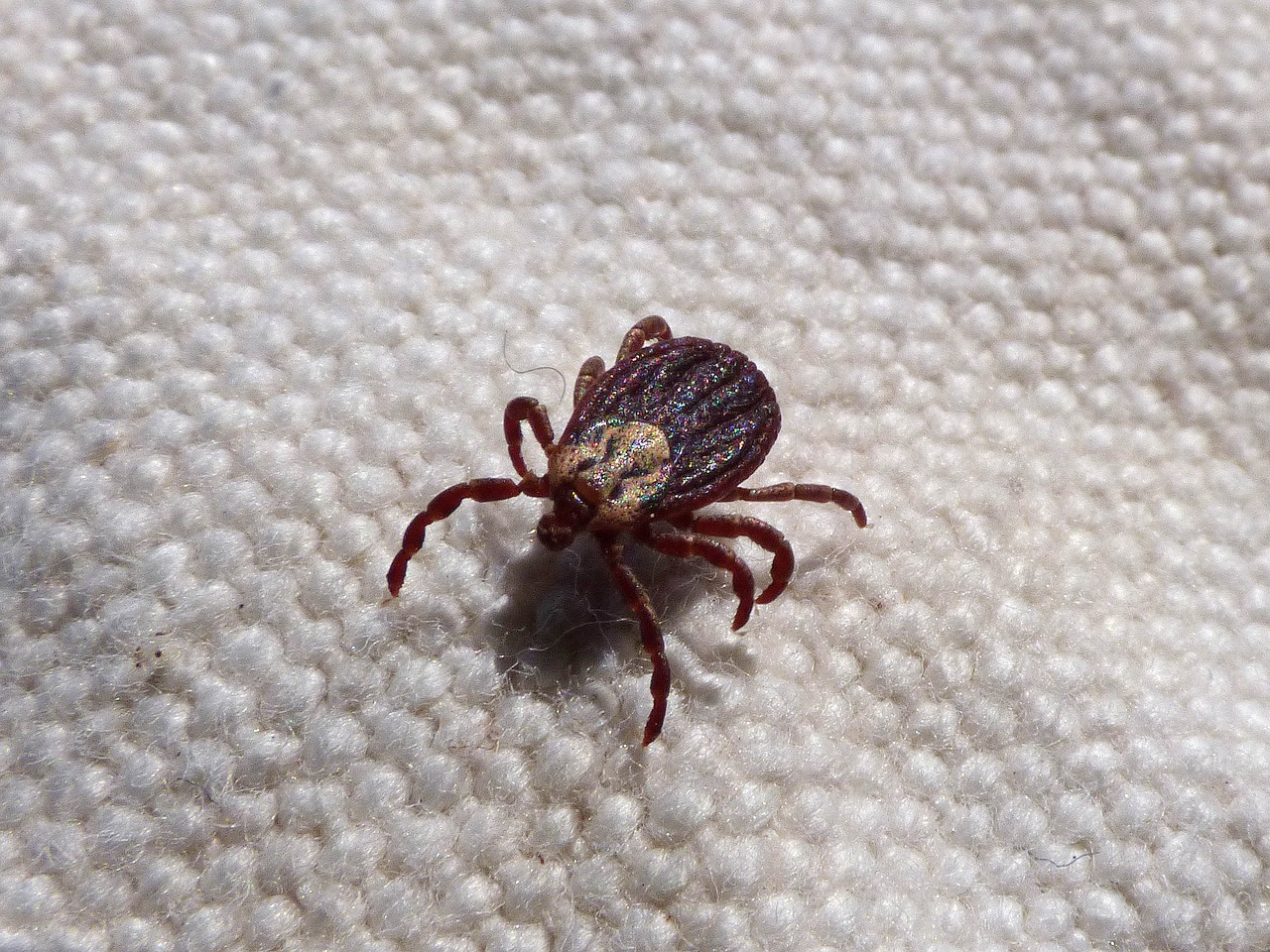
Ticks are more easy to spot if you wear light-colored clothing.
An ounce of prevention
Before you go outdoors
- When going outdoors, wear protective light-colored clothing whenever possible so ticks can be easily spotted. Clothing should be tucked in around the ankles and waist for extra protection and you can even put tape around openings and edges of clothing.
- Know where to expect ticks. Ticks live in grassy, brushy or wooded areas, and on animals. You can avoid or limit contact with ticks by avoiding those areas or by walking in the center of trails. Ticks also prefer shady, humid environments because they can’t survive for long in sunny areas. Keep your yards closely cut and use woodchips around perimeters to discourage ticks.
- Treat clothing and gear with products containing 0.5 percent permethrin. Permethrin can be used to treat boots, clothing and outdoor gear and will hold fast through several washings. You can even buy pre-treated clothing and gear.
- Use Environmental Protection Agency (EPA)-registered insect repellants containing DEET, picaridin, IR3535, Oil of Lemon Eucalyptus, PMD or 2-undecanone. Check the labels or use the EPA’s online search tool to determine if the product can be used on children younger than 3 years old.
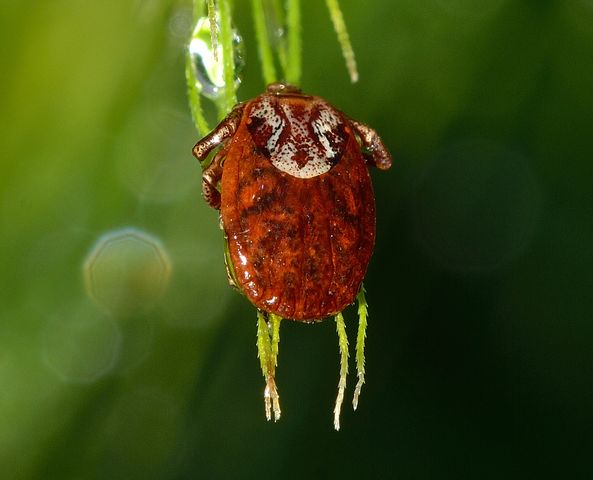
Ticks live in grassy, brushy or wooded areas, and on animals. You can avoid or limit contact with ticks by avoiding those areas or by walking in the center of trails.
After you come indoors
- Check your clothing, gear and pets for ticks, and remove any ticks found before they attach to a host. You can tumble dry clothes in a dryer on high heat for 10 minutes to kill ticks on dry clothing (damp clothes take longer). Washing clothes in hot water is also recommended (cold or medium temperatures won’t kill the ticks).
- Shower soon after being outdoors. Showering within two hours has been shown to reduce the risk of getting tick-related infections. Showering may help wash off unattached ticks and is a good opportunity to do a tick check.
- Pets should be checked for ticks at least once a week, and tick collars and other repellants or vet-approved medications are recommended.
Safely removing a tick
While everyone has their home remedy for tick removal – Mom may have her nail polish and Dad his wooden match or cigar – if you follow these helpful tips from the experts, you can make quick work of these pests.
To safely remove a tick, all you really need is a cleaning agent, such as rubbing alcohol (soap and water will also work) and a pair of pointy tweezers (not the typical household tweezers with the squared-off tips). If tweezers aren’t available, you can use your fingers covered by a piece of tissue or paper towel.
Step 1: Clean the area around the tick bite.
Step 2: Place your tweezers down firmly on the skin so you can grab as closely as possible to the tick’s head.
Step 3: Pull up slowly and firmly, without jerking or twisting, with a steady pressure. If part of the head breaks off, just go back for it with the tweezers.
Step 4: Clean the bite area again with the alcohol or soapy water, and then wash your hands.
Step 5: Note the date of the bite on your calendar in case symptoms develop later.
Please note that the use of heat, solvents, nail polish, Vaseline or other materials is not advised.
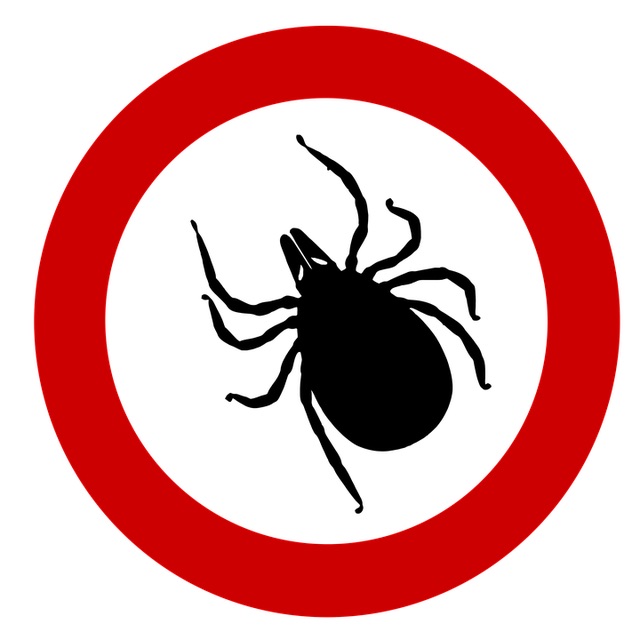 Once the tick is removed, you have two options: get rid of it or have it tested for potential bacteria or viruses. To dispose of it, you can:
Once the tick is removed, you have two options: get rid of it or have it tested for potential bacteria or viruses. To dispose of it, you can:
- Drown it in a container of rubbing alcohol
- Flush it down a toilet
- Wrap it tightly in tape, then throw it in the garbage.
- Don’t crush it with your fingers, as this may also spread disease.
To save the tick for testing, place it in a sealed container with a blade of grass to keep it alive.
While there are commercial groups that offer testing services, the Centers for Disease Control doesn’t recommend them. Some state agencies do tick testing, or you can consult with your family doctor. It is important to note, however, that positive results showing that a tick contains a disease-causing organism don’t necessarily mean you have been infected; and if you have been infected, you will probably develop symptoms before the results of the tick test are available. If you do become ill, do not wait for test results to come back before seeking treatment.
Sources: South Carolina Department of Health and Environmental Control, U.S. Centers for Disease Control, www.mayoclinic.org

